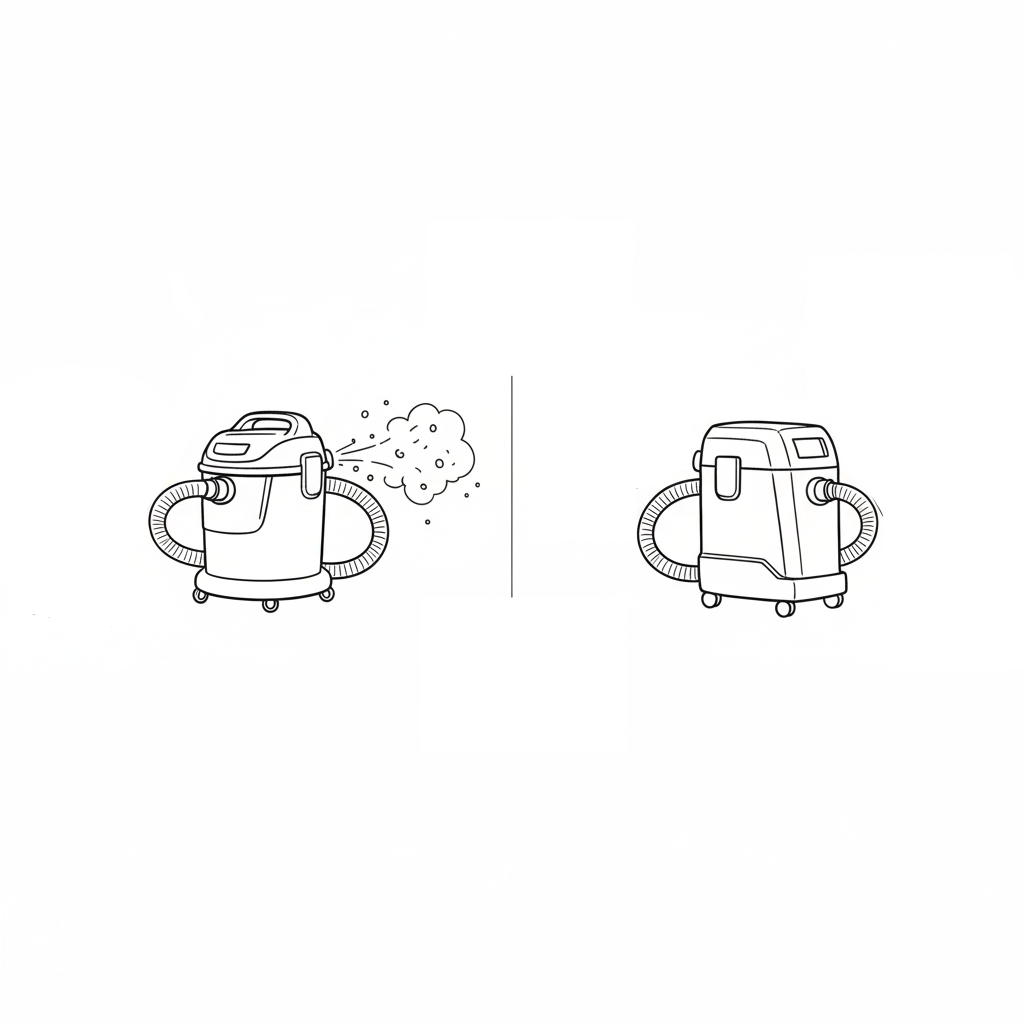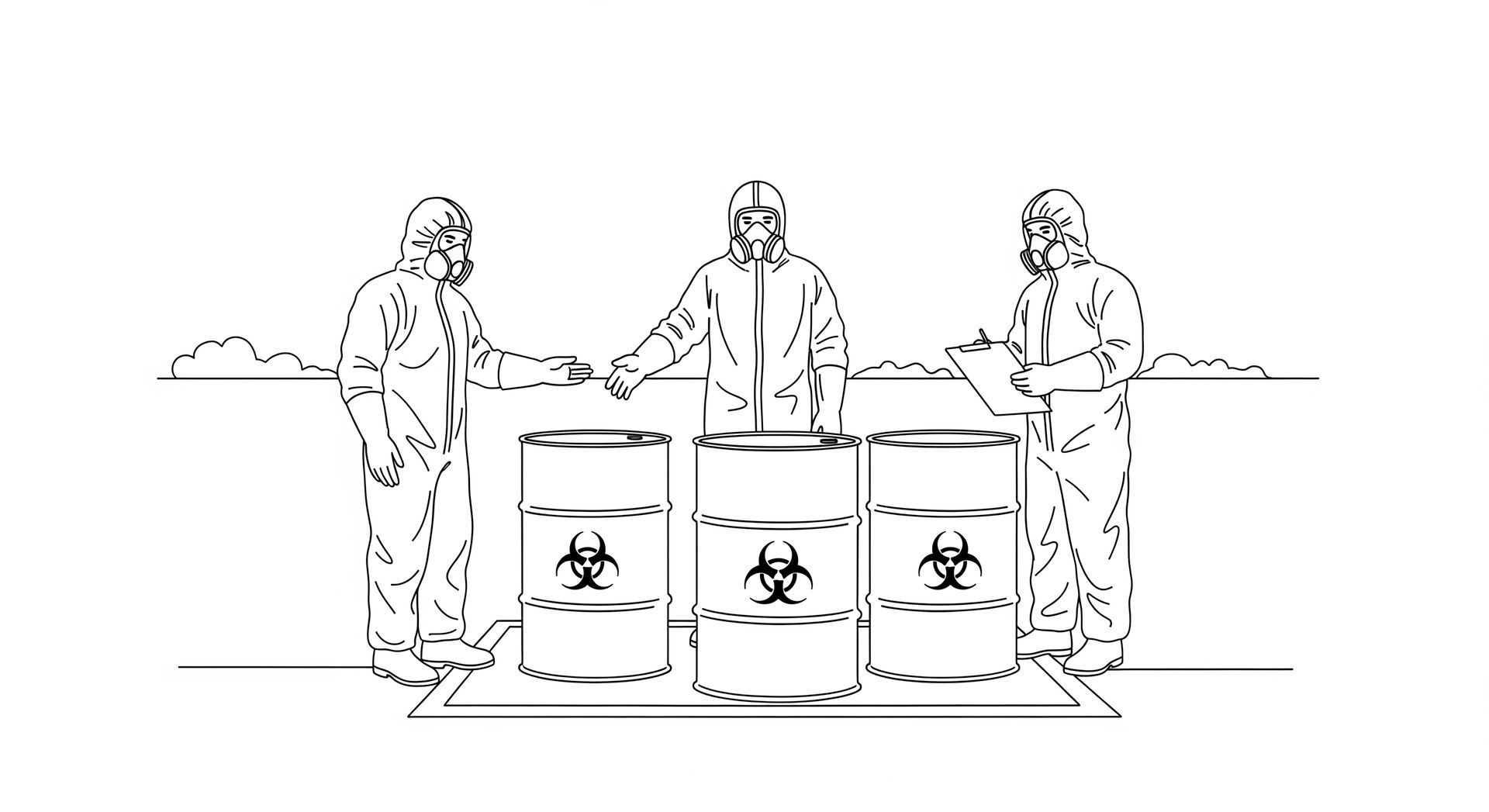Healthcare Respirator Programs During (and After) Covid
February 28, 2021
For many healthcare employers, the Covid-19 pandemic was the beginning of a workplace respirator program. Most did not have a respirator program prior to the pandemic, and are looking forward to returning to that, but aren't sure how to make that decision moving into 2021.
Without a fairly detailed dive into the specific of your workplace, existing safety policies, types of procedures performed, patient screening methods used, regulations specific to your healthcare sector, and a variety of other risk factors, we cannot advise on a specific course of action. For employers looking for professional guidance of this type, we offer consulting services and can provide a proposal.
For healthcare employers making this determination themselves, they should carefully review Cal/OSHA's Aerosol Transmissible Diseases regulation, California Department of Public Health requirements, and any local City/County guidelines, and consider the following:
Will employees be seeing confirmed or suspected Covid-19 patients?
If you are, for example, a medical clinic that will be seeing patients with respiratory or flu symptoms for evaluation and diagnosis, or you are a dental office that will have to provide emergency care for patients who have Covid 19, Cal/OSHA's aerosol transmissible diseases standard requires a full respirator program (with fit testing and training renewed annually).
If you are not seeing confirmed or suspected Covid-19 patients, conduct screening of all patients (recognizing fully the limitations of symptom and history based screening methods that will not detect asymptomatic and presymptomatic individuals), outpatient medical and dental offices have greater leeway in determining whether to continue with a respirator program.
One important point is the nature of healthcare often requires providing urgent or emergency care to patients who may either have Covid-19, or have other fairly common upper respiratory symptoms that would meet the criteria for potential Covid-19 infection.
Will employees be required to wear a respirator? Remember: an "N95 mask" is a respirator.
Regardless of risk, if employees are required to wear a respirator for any work tasks, you must implement a full respirator program (with fit testing and training renewed annually).
Are there other regulations or third party standards requiring a respirator program?
Even though you may not be required to maintain a respirator program by Cal/OSHA requirements, there may be public health requirements specific to your industry that require it. Or, third party organizations may require it as part of their accreditation standards.
Even though you may not be required to maintain a respirator program by Cal/OSHA requirements, there may be public health requirements specific to your industry that require it. Or, third party organizations may require it as part of their accreditation standards.
How has the availability of vaccination changed risk factors in the workplace?
There is always a benefit from decreased community transmission, but the impact on vaccination programs in your specific organization depends on a variety of factors, including the willingness of your workers to take the vaccine (and, related, your company policy on requiring them as a condition of employment). Significant ambiguity still exists regarding the duration of protection offered by the vaccine, and its effectiveness against emerging variants of Covid-19.
Is a respirator program needed for other pathogens?
Many employers have discovered that even with a decreasing threat from Covid-19, they still have a need for a respirator program (and in fact, should have had one all along). Particularly within medical clinics and hospitals, there may be a need to protect certain classes of employees from pathogens like tuberculosis. Dental professional may have to provide emergency care to a patient who also has a respiratory illness, and need a higher level of protection than would be provided by a procedure mask.
How effective are other safety controls used in the workplace?
Personal protective equipment like a respirator should be used when there are not other ways to effectively manage a hazard. Safer work practices and engineering controls, like isolation shielding or air purifiers, should be the first line of defense. The more effective these methods are, the less need there is for a respirator. Unfortunately, quantifying the effectiveness of controls against biological contaminants is not as easy as it is for chemical contaminants (where a variety of well-established methods exist to measure airborne concentrations)...so there's a fair amount of research and more qualitative professional judgement required here. A lack of effective safety controls, or ambiguity about their effectiveness means a respirator program should be maintained.
Would a respirator program, even if not required, improve workplace conditions?
Just as they did in early 2020, many employers deciding they will continue to maintain a respirator program through 2021 for all clinical staff, to keep everyone as safe as possible, which paid dividends in terms of morale, employee retention, and job satisfaction in the midst of the pandemic. There are also benefits in terms of reduced workforce disruption (less need to quarantine employees with potential exposure if they are wearing appropriate protective equipment).

At a glance, a shop vacuum with a HEPA filter and a dedicated HEPA-rated dust extractor might seem to do the same job: collect dust and debris. In reality, the difference between them is substantial, especially for fine particulate control, worker protection, and regulatory compliance. Adding a HEPA filter to a standard shop vacuum improves filtration, but it doesn’t turn the unit into a true HEPA-rated system suitable for hazardous dust. Key takeaway: If you’re collecting fine dust from hazardous materials, use an extractor designed and certified for that purpose. Don’t rely on a shop vac with a retrofit HEPA filter. Here’s why: Most shop vacs leak around seals or bypass fine dust through motor vents, even if they use a HEPA filter. A proper dust extractor is designed from the ground up for fine dust control. All seals, gaskets, and joints are engineered to prevent leakage, and the entire system, not just the filter, is tested to meet HEPA performance. Shop vacs are built for high pulling force (static pressure) to pick up debris, nails, or sawdust through hoses. Dust extractors are designed to steadily move larger volumes of air (airflow) and catch fine, respirable dust particles before they disperse. Shop vacs clog quickly when used on fine dust; when the filter clogs, vacuum pressure drops, and more dust escapes into the air. Dust extractors include self-cleaning or pulse-clean mechanisms that shake accumulated fine dust off the filter. This leads to consistent pressure levels, and extends filter life. A shop vac is meant for short-term cleanup. Dust extractors are designed for longer periods of use, often with features like automatic tool-start functions, variable speed control, anti-static hoses, and spark-resistant motors for combustible dust safety. For operations covered under Cal/OSHA or Federal OSHA silica standards, or for controlling other hazardous respirable dusts like carbon, graphite, metals, wood, or asbestos, a simple shop vac with a HEPA filter is not sufficient. Hazardous materials require commercial-grade HEPA-filtered dust collection systems engineered and tested for fine particulate containment and exposure control.

Respirator cartridges for gas or vapor protection have a limited service life. They need to be changed before they become saturated and can no longer purify the air effectively. If an employer is using air-purifying respirators for protection against gases and vapors, Cal/OSHA T8 §5144(d)(3)(C) requires that the employer either: Use a cartridge with an end-of-service-life indicator (ESLI) that provides an indication to the user that the cartridge has reached the end of its service life. Unfortunately, ESLI cartridges are not available for most chemicals. Implement a time-based cartridge changeout schedule. This must be, per Cal/OSHA, “based on objective information or data that will ensure that ... cartridges are changed before the end of their service life. The employer shall describe in the respirator program the information and data relied upon and the basis for the ... cartridge change schedule.” Relying on users to detect the end of the cartridge service life by smell, taste, or irritation of the chemical passing through is not compliant as a primary method for cartridge changeout. It may be used only as a secondary safeguard to the employer's time-based changeout schedule. This is a common mistake: an employer identifies a potential respiratory hazard, buys respirators, and provides fit testing - yet skips the crucial step of a formal, documented hazard assessment and changeout schedule. For gas or vapor exposures, your written program should clearly specify: • The correct respirator type for the task • Appropriate cartridge or combination filter-cartridge • A time-based changeout schedule supported by data Safewest can help develop or review your respirator program, including hazard assessments and cartridge change schedules. Contact us to make sure your program is compliant and your employees are protected.

HAZWOPER (Hazardous Waste Operations and Emergency Response) training requirements apply to certain operations involving hazardous waste. These requirements dictate the amount, type and levels of training that employees working with hazardous waste must receive. The requirements for hazwoper training can be found in Cal/OSHA § 5192 and Federal 49 CFR 1910.120 . In general, there are three categories of hazmat operations, and specific training requirements for each. These three categories are hazmat site cleanup, emergency response, and operations at treatment, storage, and disposal facilities. Site Cleanup Cleanup and removal work at sites that have been identified by a government agency (state, federal, or local) as having an accumulation of hazardous substances that creates a threat to the health and safety of individuals or the environment or both. General site workers removing hazmat with potential exposure to hazardous substances and health hazards shall have 40 Hours of Training + 3 Days Supervised Field Experience. General site workers in areas where hazard levels have been fully identified, exposures are below published safety limits, there are no health hazards, no possibility of an emergency release, and respirators are not required shall have 24 hours of training + 1 day supervised field experience. Occasional/limited site workers (such as those doing monitoring or surveying) and are unlikely to be exposed to dangerous levels of hazmat shall have 24 hours of training + 1 day supervised field experience. Supervisors of general site workers shall meet the same training requirements as that category of general site worker, plus have an additional eight additional hours of specialized hazardous waste operations management training. All categories of site cleanup workers shall have 8 hours of annual refresher training. Emergency Response Emergency response to releases of, or substantial threats of releases of, hazardous substances, regardless of location. Awareness Level (FRA): Basic awareness, recognize hazmat threat, call for help. Competence based, no hourly requirement. Operations Level (FRO): Defensive response, contain and limit the release. Competence based, or 8 hours of training required. Hazmat Technicians and Hazmat Specialists: Direct response to stop a release of hazardous substances. Training scope and duties varies depending on position/role. 24 hours of training required. Incident Commander/Manager: Control and manage scene, implement response plans. 24 hours of training required. All emergency response workers shall receive annual refresher training or evaluation to demonstrate competency in their required areas. TSDF Operations Operations at Hazardous Waste Treatment, Storage, and Disposal Facilities (TSDFs) Workers are required to have 24 hours of initial training, and 8 hours annual refresher training.

The most important thing to know about snakebites is that people drastically overestimate both the likelihood and the severity of venomous snake bites in the US. Snakebites are fairly rare, and fatalities from snakebites are so unlikely (generally 5-10 per year in the entire country), a person is many times more likely to die from a lightning strike, or a heat-related emergency, or any number of other outdoor hazards. Prevention is simple. It is relatively simple to avoid most snakebites by being aware of where you step, not reaching or climbing on any area you haven't visually inspected first, and not approaching snakes to catch, kill, or photograph them. There are some significant misunderstandings about first aid measures for snake bites, many unfortunately perpetuated by uninformed first aid instructors and irresponsible equipment vendors. Do NOT apply suction. Avoid the use of commercial snakebite kits with suction pumps, like the Sawyer Extractor. See our article on venom extractors for more information on these ineffective and dangerous devices. Do NOT apply tourniquets or constricting bands. Do NOT cut the skin. Basic first aid measures are simple. Here's what you should do: Keep the person calm and avoid unnecessary movement. Why: Keeping the person's heartrate in a normal range slows the distribution of venom in their body. Remove watches, rings, and other tight fitting items. Why: These can constrict bloodflow if the person's limbs start to swell due to the venom. Call 911. If you do not have cellphone service, you will have to consider either finding a way to transport the person, or leaving them while you try to reach an area with cellphone service. Why: The only definitive care for a venomous snakebite is transport to a hospital for supportive care, and possibly anti-venom medication. For people working (or recreating) outdoors, mindfulness of where you place your feet and hands is your best defense against snakebites. If you will be in an area without cellphone coverage, investing in a means of emergency communication such as a satellite phone or messenger, personal locator beacon, two-way radio is the most important part of your emergency response plan. Three action steps for California employers: Review this information with your workers in April or March, which is when snake sightings will begin to increase. Ensure workplace first aid supplies do not contain outdated and dangerous supplies like snakebite kits and venom extractors. Ensure workers in remote areas have adequate means of emergency communications.
